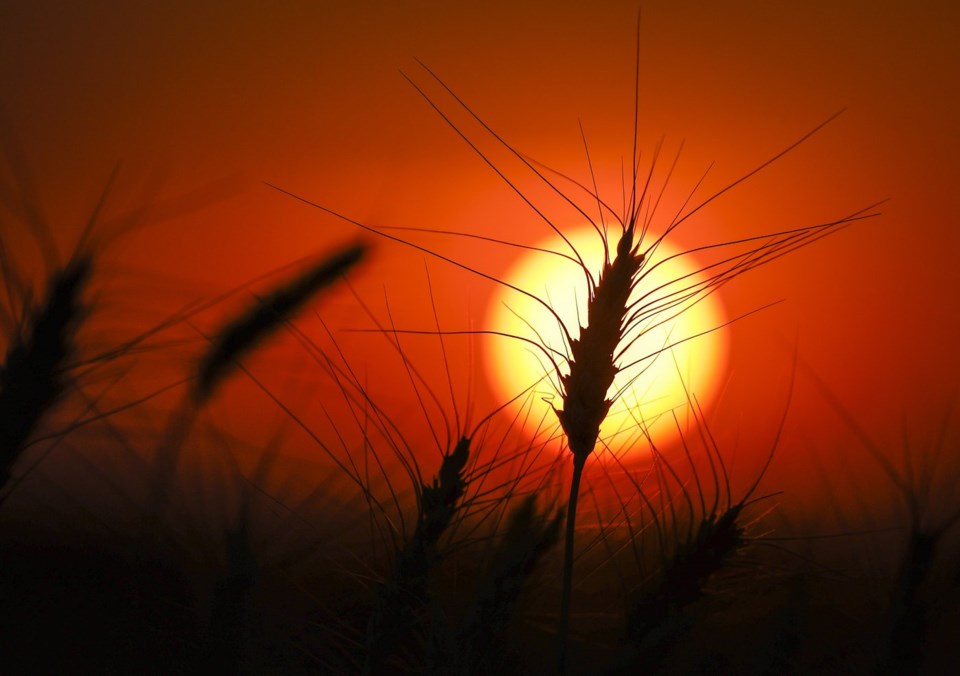Extreme weather events like fires, floods, heat waves and droughts pose an increasing risk to Canada’s food supply chain, putting pressure on prices all the way to the grocery store shelf, say experts.
“Anytime you have major weather-related events, it tends to increase costs,” said Frank Scali, vice-president of industry affairs at Food, Health & Consumer Products Of Canada.
These kinds of events are becoming more frequent and intense in Canada and around the globe.
A 2019 federal government report said temperatures are projected to keep increasing, driven by human influence, while precipitation is also projected to increase.
Weather plays a big role in food production, and factors like too much or too little heat or moisture can affect not only the volume of food produced, but also the prevalence of pests and diseases, said Amanda Norris, senior economist at Farm Credit Canada.
“Weather can also impact activities further down the supply chain,” she said. “For example, you might have damaged infrastructure from floods that changes transportation routes and the ability to move those products along the food supply chain.”
Shortages caused by extreme weather can also drive food prices higher if supply isn’t able to meet demand, she said.
According to a July report from the Canadian Agri-Food Policy Institute, the agriculture industry has faced a “cascade of challenges” recently, including climate change, with the ripple effects of these headwinds reverberating throughout the supply chain.
In a survey for the report, respondents from the industry as well as members of government identified extreme weather as one of the top risks to the agricultural sector.
Major flooding in B.C. three years ago hit farmers hard, with hundreds of thousands of chickens and other farm animals dying after atmospheric rivers caused flooding and landslides.
Drought in 2023 strained crop production in Saskatchewan, with output declining almost 11 per cent, two years after a historic 47-per-cent production decline due to extreme heat and drought in 2021.
The agriculture industry has been able to make itself somewhat more resilient to things like drought by changing some of its practices, said Tyler McCann, managing director at the agri-food policy institute, such as using a no-till technique to keep more moisture in the earth. Those practices can’t protect crops from the most extreme weather, he said, but they do help in other years.
Extreme weather in other parts of the world can also affect farmers if input costs, like fertilizer, go up, or if there’s a shortage of a major crop that wreaks havoc on commodity prices, said McCann.
“An extreme weather event in China or India at the wrong time could lead to pretty significant, devastating consequences, because there really isn't enough wheat in the rest of the world to make up for the potential losses,” he said.
While farmers often see direct impacts from extreme weather events, for those further along the supply chain, like manufacturers and processors, the effects are usually indirect, said Scali.
Supply chains are generally designed to keep the lowest cost in mind, meaning the risk of disruption is higher, he said, such as having one large factory instead of multiple smaller ones, or being reliant on a single source for an important input. A disruption on one part of the supply chain can create a “domino effect,” he said.
However, the COVID-19 pandemic and resulting supply chain snarls have shown companies that sometimes the lowest-cost option is too risky, said Scali. Lots of companies have mapped their supply chains, turning to multiple sources for inputs or identifying backups.
“It really put everybody a step ahead,” he said.
But these kinds of changes can’t mitigate every potential disruption, said Scali, and shortages and price volatility are likely to get worse.
Extreme weather doesn’t just affect the commodities themselves, it can also disrupt transportation.
Fires in Western Canada are the most recent example, Scali said, where rail lines were shut down.
“Yes, you can put stuff on trucks, but there's never enough truck capacity in the country to make up for rail. So things will be delayed, and it'll get more expensive,” he said.
If it’s a one-time disruption, the company usually tries to absorb it, he said, but longer-term disruptions or changes usually mean prices will have to go up.
Canadians may notice the effects of extreme weather events on their food in two ways: when prices go up, and when items are suddenly no longer available.
In November 2022, lettuce prices spiked amid a shortage of iceberg and romaine, attributed to a virus in a major lettuce-growing area in California. The following spring, the valley was hit by severe rain and storms, causing flooding.
Earlier this year, spiking cocoa futures highlighted the effects of high temperatures, weather conditions and disease in West Africa, where crop yields were damaged.
Orange juice prices saw a similar spike this spring, as flooding and drought damaged harvests in Brazil, a year after Spain and Florida both suffered lower orange production amid drought and Hurricane Ian, respectively.
Strawberries are also at risk. According to the University of Waterloo, the berries are set to become more rare and costly as temperatures rise. It noted Canada is a major importer of strawberries from California.
This year, many of the food categories that saw volatility in recent years have stabilized, Michelle Wasylyshen, spokeswoman for the Retail Council of Canada, said in an email. However, current extreme heat in Western Canada and the U.S. could affect some prices in the fall and winter, she said.
Geopolitical conflicts add to the mix, she said. “The ongoing conflict in Ukraine has made us more dependent on Canadian grain, so when that is impacted by extreme weather, it has more of an impact than before.”
— With files from The Associated Press
This report by The Canadian Press was first published Aug. 12, 2024.
Rosa Saba, The Canadian Press



